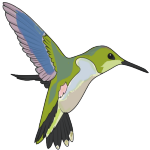Occupational Therapy Plus Simple Adaptive Equipment May Help Children Who Struggle with Handwriting
An introduction to adaptative equipment for children with handwriting difficulties is presented in this interview with Occupational Therapist Darrell Parker.
Interview By Allison Martin
What difficulties might children with cerebral palsy or other special needs have with handwriting?
Often children with cerebral palsy present with hemiparesis (weakness on one side of their body). This may not seem to be a problem since usually the other side of their body is less effected; however, this can affect sitting posture (which affects writing), and their ability to keep their paper from shifting.
If the physical impairment secondary to cerebral palsy or another disability is severe enough then functional handwriting may not be feasible and computer technology may be a better option.
How can an occupational therapist help children with handwriting?
Occupational therapists are trained in the detailed mechanics of hand function as well as in the visual motor and visual perception aspects that relate to the task of handwriting. It is hard to know exactly what is at the root of a handwriting problem without a thorough assessment from an occupational therapist.
Is there adaptive equipment that might be useful for easier writing?
There are lots of modification/adaptations (pencil grips, change in pencil grasp, strengthening programs, handwriting paper changes, small splints/bands etc.) that can be made. Most of it is simple and inexpensive. Some pencil grips can help children to change their pencil grasp from one that is inefficient to one that is more efficient. Simple hair ties can be used (one around the wrist, one around the pencil) to help children cradle their pencil back into the web-space of their hands.
After identifying the specific handwriting problem, an occupational therapist can direct someone to the appropriate adaptive equipment.
